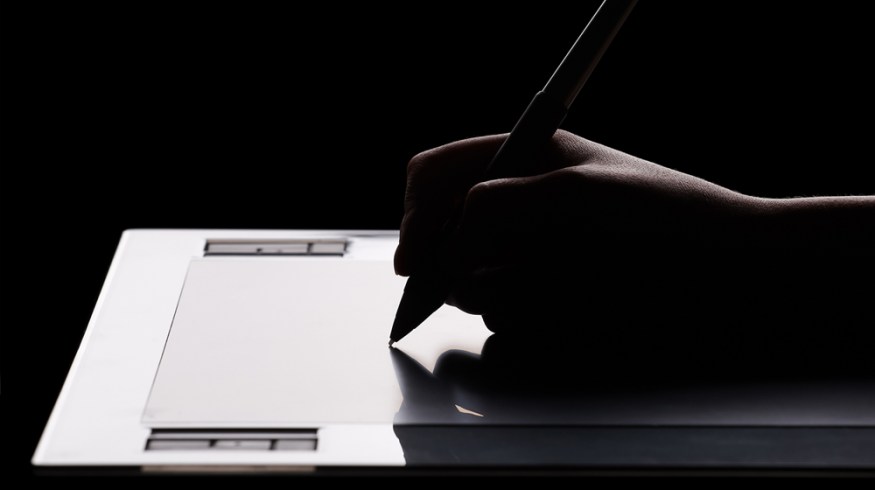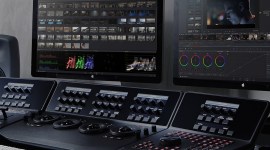
Why Use a Wacom Tablet or Stylus for Post Production?
More than just a mouse alternative, a stylus may actually improve your work – especially in regards to video editing, compositing, motion design and color grading.
Using a tablet/stylus may seem intimidating for those that have exclusively used a mouse before. In fact, it may still seem intimidating once you start using it, but you must give yourself a chance to get used to it. Over time it will become more natural, and ultimately a faster alternative.
Having used a Wacom pen consistently for a decade, I’d like to shed light on how a stylus/table can increase your creative workflow, boost efficiency and make you more productive.
Note: We’re not sponsored by or endorsing Wacom brand tablets, they’re simply the tablet of choice for most creative professionals today.
Speed Via Hand-Eye Coordination
The biggest benefit is speed. The same reason I use a tablet is the same reason professional swimmers shave their heads to improve their times by a fraction of a second, only in the post-production world those improvements are multiplied over time.
A traditional mouse has an arbitrary correlation to its mouse pad; you can just pick up the mouse and reposition it. The tablet’s area maps absolutely to the full real estate of your monitors. The tablet’s left corner corresponds to the monitor’s left corner. You’ll find yourself snapping to the exact point you want when navigating the operating system. It’s this hand-eye coordination inherent in the tablet technology that speeds you up.
Over the course of a busy workday you’ll trim seconds off what would take longer with a mouse. Add those seconds up over a ten-hour day and you’ll have saved a chunk of time. When you multiply how much time you save over a week or a month, it really becomes significant.
Think about keyboard shortcuts. Isn’t typing command-C easier and faster than selecting Edit and then Copy every time? You may think the time saved is minimal, but when you get into that groove, the time adds up.
Ergonomic Feel
Tablets have a slight learning curve, but don’t be afraid. At first most people don’t realize the pen hovers over the tablet as opposed to being pressed on its surface. It’s similar to holding a pencil. The relaxed hold prevents hands from getting tired. Hands are important, people. Treat them right.
Mapping
You can increase the tablet’s speed by limiting the area it maps to. For instance, with Wacom tablets you can adjust the preferences to constrain the proportion of the screen that the tablet covers. This is ideal for working with two monitors or a large amount of screen real estate. Some of Wacom’s tablets may be too big for certain screens like laptops. Constraining the area gives you the right sensitivity to zip around at the speed you want.
Curious about the different sizes and types of tablets? PremiumBeat blogger Aaron Williams gives an AWESOME rundown on his Wacom settings, tablet recommendations, use in different post-production applications and more – Wacom: The Hidden Manual. More on my personal setup below…

Pressure Sensitivity
One of the main features that make tablets an obvious choice for designers and illustrators are their pressure sensitivities. You can achieve a wide range of nuance with a swipe, dab, or erase. This is ideal if your job revolves around illustrating either raster or vector graphics.
Buttons…If That’s Your Thing
I’ll be the first to say that as soon as I jump on a new Wacom at a gig, I disable all of the tablet’s buttons. I dislike my hand hitting something I didn’t intend. For most users, including myself, the buttons are an underutilized feature. The newer models sport less invasive buttons, as well as a touchstrip on either side that can be used for scrolling or zooming. You can flip the newer models around if you’re left-handed so the buttons really won’t get in the way. Tweaking the buttons to the functions you want will make you a power user. I should probably up my game.
What I have found very helpful is taking advantage of the buttons on the pen itself. In addition to the main pen pointer and eraser, there are two buttons on a Wacom pen that can be set to any number of commands. I use them for right-click and double-click, so opening a document doesn’t even require tapping twice on the tablet, and no keyboard presses are needed.

No Cleaning Out Gunk! No Batteries Needed
It amazes me how many people are still using conventional trackball mice. We all remember the annoyance of cleaning the accumulated black gunk from the treads of the mouse every few months. While more modern mice use lasers, it can be difficult to find the right surface which works with them.
Tablets operate via USB, so there’s never a need to change out batteries. Wacom tablets come with a multi-button mouse too, just in case you need it.
A few years back, motion design guru Nick Campbell at Greyscalegorilla gave his personal take on using a tablet: “Once you go Wacom, you won’t go back.” Check it out:
Consider a Change
If you’re looking to take your professional work to the next level, consider a tablet. Once you have the proper grip and understand how the surface maps to your screen, you’ll wonder how you ever did without it.
Still want more info? Check out the official videos from Wacom on using tablets in Premiere Pro and After Effects. Even though the videos cover older versions of the software the info is still applicable today:
Wacom Tablets and After Effects:
Wacom Tablets and Premiere:
Do you use a tablet in your post-production work? Share your advice/thoughts/suggestions in the comments!





